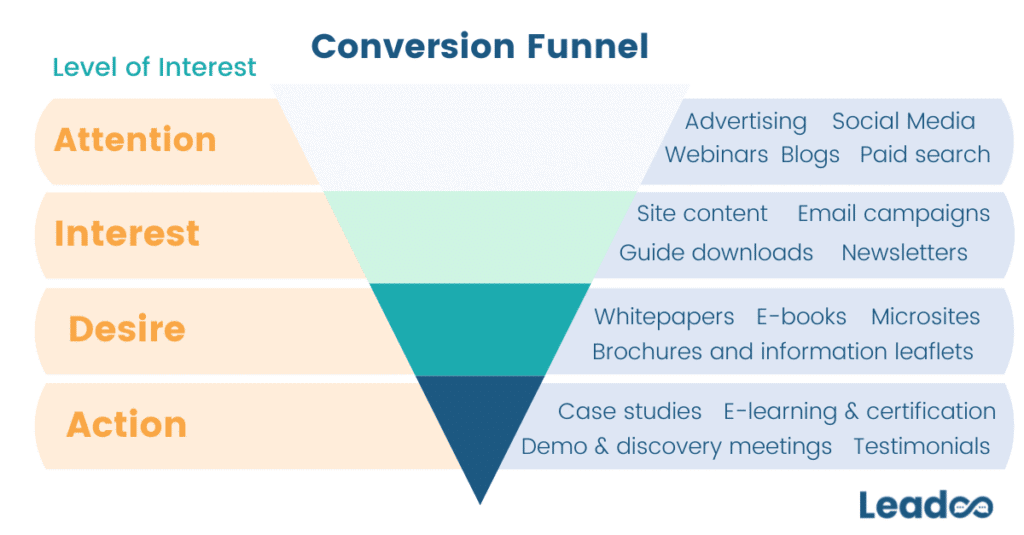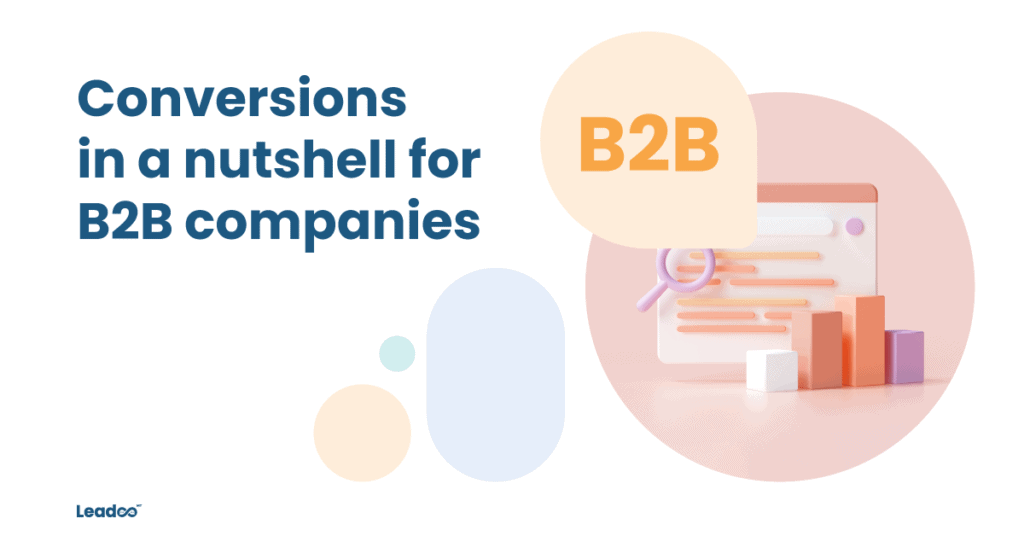Use our free Conversion Rate calculator to calculate your website’s conversion rate:
What is a Conversion?
A conversion is simply any desired action a visitor to your website has taken in order to interact with you in some way. What this looks like is determined by you, and can depend on different things – your industry, your aims, your market.
Micro-Conversions
Micro-conversions are smaller conversions that happen en route to the customer making the final conversion or purchase. They tell us where the prospect is in the conversion funnel and means we can target them based on their level of intent. The type of conversion also gives us a clue into how far into the buying process each customer is.
For example, someone who downloads a resource (such as a guide) isn’t going to be as far along in the decision-making process as a client looking for a demo. Downloading a resource could mean that someone is just looking for information, but requesting a demo means they’re more likely to be seriously considering making a purchase and are at the point where they might be making comparisons across competing products.
See the conversion funnel below, along with some typical conversions/activity you might expect customers to engage with at different times in the buying process.

Keeping one eye on micro-conversions is important because every buying process looks different, and potential customers can enter the funnel at any point. The more you know about each visitor and their intentions, the more you can do to nurture each lead and get them to that final conversion point – and that’s what we’re aiming for, isn’t it?
How to calculate and interpret Conversion Rate
Obviously we’ve provided a helpful conversion rate calculator above so you don’t have to do the maths yourself (ain’t nobody got time for that). But if you want to understand how we got to the final number, calculating conversion rate looks like this;
Conversions (desired actions taken) x 100
Website Visitors
For example, if your website received 10,000 visitors a month, you get 200 conversions or leads a month, then your conversion rate would be calculated as:
200 x 100 = 2% conversion rate.
10,000
This means that for every 100 visitors you receive on your site, 2 of them on average will convert.
Is that a decent conversion rate?
A ‘good’ conversion rate is a bit of a contentious topic, but our rule of thumb is: no matter what your conversion rate is, you should aim to improve it. Obviously, if you’re some sort of unicorn managing to somehow convert close to 100% of your traffic, this doesn’t apply to you (and maybe you’d like a job as a conversion specialist…?).
Another helpful way to interpret your conversion rate is to compare it to benchmarks for your industry. We put together a helpful guide with some benchmarks for different industries, based on a variety of different types of conversion, and with a bunch of top tips on improving your rate.
Where can it be used?
The above calculation can be used to work out the conversion rate for traffic to your site, but not for traffic on individual pages on your site. Conversion rate looks at the overall number of people converting.
There are a few ways to check on a landing-page level, but it’s not as reliable as the overall conversion rate and only really tells you their conversion rate if they landed on that page immediately and converted. In practice, most people navigate through more than one page before finding what they’re looking for and converting, and so there are drawbacks to calculating it in different ways:
If you calculate it using conversions/sessions (including a specific page) then you will end up inadvertently including conversions that happened elsewhere on the site.
The same thing will happen if you calculate it as conversions/users, as users will likely have visited multiple pages and maybe even have multiple sessions.
Therefore, the best way to work this out is likely to be by looking at conversions/unique page views as this will allow you to look at how likely someone who visits this page is to convert.
Key Takeaway
👉 Conversion rate is calculated by taking Conversions/Visitors x 100.
👉 A ‘good’ conversion rate is hard to define, but you can use industry benchmarks and close monitoring of your rate to ensure you make the most of every visitor.
👉 Conversion rate only really works for the whole site – it becomes complicated if you want to work out the conversion rates for individual pages.


